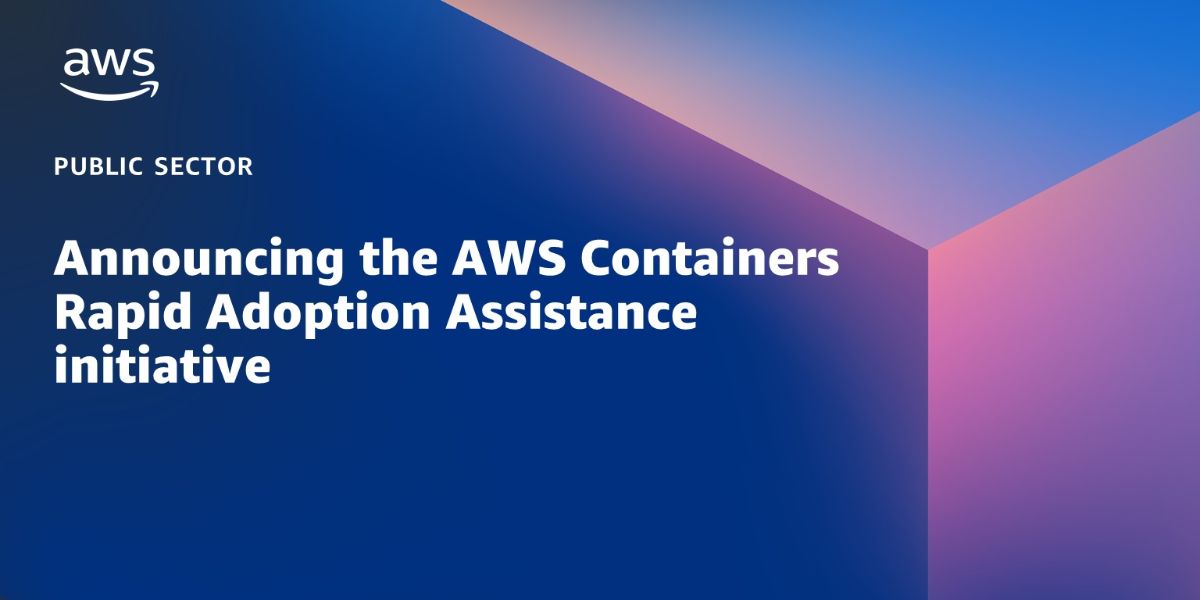AWS Public Sector Blog
Tag: containers
Modernize Moodle LMS with AWS serverless services
In this blog post, you will learn how to deploy and run Moodle using serverless technology on Amazon Web Services (AWS).
How the Republic of Singapore’s Air Force has redefined airspace management
In this blog post, we’ll share how the Republic of Singapore’s Air Force, with the support of AWS, responded to a specific challenge: how to operate unmanned aerial vehicles (UAVs or drones) in a crowded, complex airspace.
Best practices for project management in the AWS Cloud
Amazon Web Services (AWS) employs project management principles to deliver public sector cloud outcomes. These principles drive successful service launches, new solutions, and workload migrations. Read this blog post to learn about the project management tools, references, and AWS Management Console tips that give public sector customers better project visibility, automate task management, and help accelerate project outcomes.
Migrate and modernize public sector applications using containers and serverless
Many public sector customers are interested in building secure, cost-effective, reliable, and highly performant applications. Technologies like containerization and serverless help customers migrate and modernize their applications. In this blog post, learn how public sector customers use offerings from AWS like AWS Lambda, Amazon Elastic Kubernetes Service (Amazon EKS), Amazon Elastic Container Service (Amazon ECS) to build modern applications supporting diverse use cases, including those driven by machine learning (ML) and generative artificial intelligence (AI). If you want to learn more on this topic, please register to attend the webinar series, Build Modern Applications on AWS.
Modernizing public sector applications using serverless and containers
Application modernization helps public sector customers innovate faster with resilient, highly available, and scalable applications. Serverless and containers services support customers in accelerating time to market and migrating existing applications to AWS, and they can decrease an organization’s total cost of ownership (TCO). In this blog post, learn how public sector customers use AWS serverless and containers technology to modernize their applications.
Modernize Moodle LMS with AWS serverless containers
Moodle is a popular open source learning management system (LMS). Many education institutions are deploying and running Moodle on a physical hardware or virtual machine (VM) environment. They are looking to improve the scalability of their Moodle application to simplify operations and monitoring, and also optimize operating costs. One way to approach this is to use containers technology. In this blog post, learn how to deploy and run Moodle using serverless containers technology on AWS.
How the US DOJ Tax Division built a remote telework application in six weeks with AWS
In mid-February of 2022, the US federal government began planning the return-to-office after the COVID-19 pandemic. The US Department of Justice (DOJ) Tax Division needed to quickly build and launch a telework authorization application by April 1, which would help their more than 500 attorneys, paralegals, and administrative personnel request a hybrid work arrangement—all while keeping sensitive information compliant and secure. To do this, the DOJ Tax Division worked with AWS to build an enterprise-level telework approval application in less than two months, before the Division’s re-entry in mid-April of 2022.
Announcing the AWS Containers Rapid Adoption Assistance initiative for public sector partners
Public sector organizations can benefit from containers as they can enable building mission critical applications with better fault tolerance and agility, migrating applications across different platforms and in modernizing legacy applications. To help partners build containerized applications on behalf of public sector organizations, AWS is launching the AWS Containers Rapid Adoption Assistance (CRAA) initiative.
Top announcements from the AWS Public Sector Partners leadership session at re:Invent 2021
During the 10th anniversary of re:Invent, I was thrilled to share announcements and achievements from AWS Partners and programs for the public sector around the world. Since its launch, AWS’s Public Sector Partner Program participation has increased by an average of 54% year over year, with partners providing solutions in mission areas across healthcare, space, energy, transportation, government, education, and nonprofit. In both the Global Partners Summit keynote at re:Invent 2021, as well as in my public sector leadership session, I highlighted the new and upcoming AWS Partner solutions and accomplishments.
How to build smart cities with FIWARE Orion Context Broker and Cygnus on AWS
Several smart cities use FIWARE, an open source framework supporting the development of smart solutions. FIWARE leverages sensing data from Internet of Things (IoT) devices, then collects, stores, and analyzes data with an API call. One FIWARE component, Orion Context Broker, gathers context information from diverse sources such as mobile apps, IoT devices, and social networking services, and manages the lifecycle of this context information, from registrations, updates, queries, and subscriptions. In this blog post, we address building Orion Context Broker on AWS. Learn how to deploy Orion Context Broker and Cygnus on AWS with AWS Cloud Development Kit (AWS CDK) and Docker Compose quickly.









